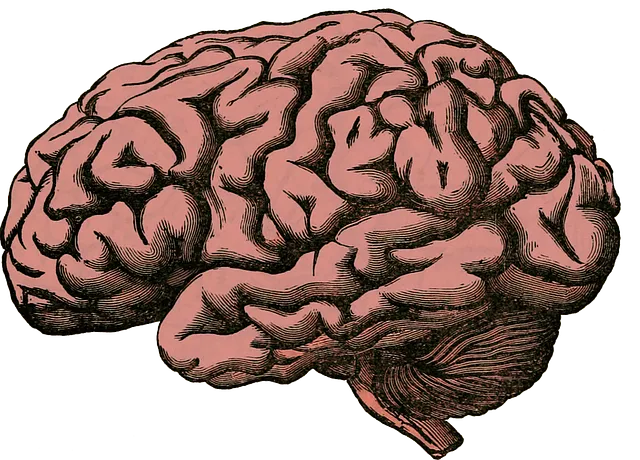Kaiser Permanente behavioral health services reviews from Lafayette highlight the importance of integrating diverse features into mental wellness apps to cater to users' varied needs. These include risk assessment tools, conflict resolution techniques, and trauma support services for professionals and individuals seeking stress management and anxiety relief. Top-rated apps in Lafayette should offer personalized content like meditation practices, journaling for mood tracking, and burnout prevention strategies. Incorporating evidence-based therapies like mindfulness and CBT enhances app effectiveness and user trust. Privacy, security, and ethical practices are crucial, ensuring users feel safe while managing their mental health journeys through these digital solutions.
In today’s digital age, mental wellness apps are gaining prominence as powerful tools for enhancing psychological well-being. This article explores the evolving landscape of mental health app development through a comprehensive review of Kaiser Permanente Behavioral Health Services’ insights and Lafayette’s top apps. We delve into key features that users seek, design strategies for engaging experiences, and best practices for integrating evidence-based therapies. Additionally, privacy, security, and ethical considerations are highlighted, offering valuable guidance for developers aiming to create impactful mental wellness solutions.
- Understanding Mental Wellness App Needs: A Kaiser Permanente Behavioral Health Services Review
- Key Features for Effective Mental Health Apps: What Users Look For
- Designing an Engaging User Experience: Strategies from Lafayette's Top Apps
- Integrating Evidence-Based Therapies: Best Practices for Mental Wellness Apps
- Privacy, Security, and Ethical Considerations in Mental Wellness App Development
Understanding Mental Wellness App Needs: A Kaiser Permanente Behavioral Health Services Review

A comprehensive understanding of mental wellness app needs is essential, as highlighted by Kaiser Permanente behavioral health services reviews from Lafayette and beyond. These reviews underscore the critical importance of addressing diverse user requirements to foster effective digital mental health solutions. One key aspect involves integrating risk assessment tools tailored for mental health professionals, enabling them to proactively identify vulnerabilities and provide timely interventions.
Furthermore, conflict resolution techniques and trauma support services must be seamlessly woven into app functionalities. By incorporating these elements, mental wellness apps can create safe spaces for users, facilitating open communication and nurturing resilience in the face of adversity. Such considerations are pivotal in developing user-centric applications that genuinely impact and improve mental health outcomes.
Key Features for Effective Mental Health Apps: What Users Look For

When it comes to mental wellness apps, users seek features that support their overall well-being and provide accessible tools for managing stress and anxiety. According to Kaiser Permanente behavioral health services reviews Lafayette, popular demands include personalized meditation and mindfulness practices tailored to individual needs, with options for guided sessions and quiet background music. Users also value integrated journaling functions that allow them to track moods, thoughts, and progress over time, fostering self-awareness and reflection.
Beyond these core functionalities, effective mental health apps often incorporate burnout prevention strategies for healthcare providers by offering stress management techniques and promoting work-life balance. Communication strategies are integral, enabling users to connect with peers, seek support from professionals, and access resources through in-app messaging or community forums. Mental Health Policy Analysis and Advocacy is another aspect that gains traction, as apps may provide information on local services, policy updates, and ways to get involved in mental health advocacy efforts.
Designing an Engaging User Experience: Strategies from Lafayette's Top Apps

Designing an engaging user experience is paramount when developing mental wellness apps, especially considering the sensitive nature of behavioral health services reviewed by Kaiser Permanente. Apps like those from Lafayette’s top developers must foster a sense of comfort and connection to encourage users’ active participation in their mental well-being journeys. One effective strategy is incorporating interactive elements that personalize the user experience, such as adaptive content tailored to individual needs, from stress management workshops to empathy building strategies.
By leveraging user data and feedback, app designers can create immersive environments that offer Trauma Support Services in innovative ways. This might include gamified challenges designed to reduce anxiety or mindfulness exercises that adapt to the user’s mood. These engaging features not only enhance the overall experience but also promote consistent use, which is crucial for effective mental wellness management.
Integrating Evidence-Based Therapies: Best Practices for Mental Wellness Apps

When developing mental wellness apps, integrating evidence-based therapies is paramount for effectiveness and user trust. According to Kaiser Permanente behavioral health services reviews, Lafayette, top-rated apps like Headspace and Calm have set a benchmark by incorporating practices backed by rigorous scientific research. Incorporating techniques such as mindfulness meditation and cognitive behavioral therapy (CBT) not only enhances app credibility but also significantly improves user outcomes. Users seeking mental wellness solutions expect evidence-based approaches, ensuring that the app’s therapeutic methods align with recognized treatment modalities strengthens user engagement and retention.
Best practices for integrating these therapies involve user-friendly interfaces that guide individuals through exercises, ensuring clear instructions and opportunities for self-reflection. Additionally, personalizing content to cater to diverse mental health needs, including trauma support services and coping skills development, can significantly enhance the app’s impact. Regular updates based on the latest research in behavioral health ensure that the app remains a valuable tool for users navigating their inner strength development.
Privacy, Security, and Ethical Considerations in Mental Wellness App Development

In the realm of mental wellness app development, privacy, security, and ethical considerations are paramount. As users share intimate details about their emotional healing processes and mental health journeys, ensuring data protection is crucial. Apps must adhere to stringent guidelines, such as HIPAA (Health Insurance Portability and Accountability Act) standards, to safeguard sensitive information. Users like those who have benefited from Kaiser Permanente behavioral health services in Lafayette expect their personal struggles and triumphs to remain confidential.
Beyond compliance with legal frameworks, developers must prioritize transparency and consent. Users should be clearly informed about data collection practices and given control over how their information is used. This not only fosters trust but also enables users to make informed decisions regarding their mental wellness journeys. Incorporating positive thinking and burnout prevention strategies for healthcare providers can further enhance the ethical framework of these apps, ultimately contributing to a holistic approach to emotional healing processes.
The development of mental wellness apps is a burgeoning field, guided by insights from institutions like Kaiser Permanente’s Behavioral Health Services and design trends seen in top Lafayette apps. By integrating evidence-based therapies, prioritizing user engagement through strategic designs, and upholding strict privacy, security, and ethical standards, developers can create impactful tools that cater to the diverse needs of users. As the digital landscape evolves, these mental wellness apps have the potential to revolutionize access to care and improve the overall well-being of individuals worldwide.






